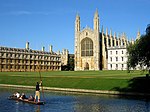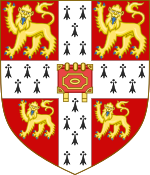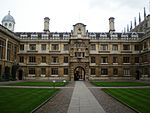King's College, Cambridge

King's College is a constituent college of the University of Cambridge. Formally The King's College of Our Lady and Saint Nicholas in Cambridge, the college lies beside the River Cam and faces out onto King's Parade in the centre of the city. King's was founded in 1441 by King Henry VI soon after he had founded its sister institution at Eton College. Initially, King's accepted only students from Eton College. However, the king's plans for King's College were disrupted by the Wars of the Roses and the resultant scarcity of funds, and then his eventual deposition. Little progress was made on the project until 1508, when King Henry VII began to take an interest in the college, probably as a political move to legitimise his new position. The building of the college's chapel, begun in 1446, was finished in 1544 during the reign of Henry VIII. King's College Chapel is regarded as one of the finest examples of late English Gothic architecture. It has the world's largest fan vault, while its stained-glass windows and wooden chancel screen are considered some of the finest from their era. The building is seen as emblematic of Cambridge. The Choir of King's College, Cambridge, composed of male students at King's and choristers from the nearby King's College School, Cambridge, is one of the most accomplished and renowned in the world. Every year on Christmas Eve, the Festival of Nine Lessons and Carols (a service originally devised for Truro Cathedral by Edward White Benson in 1880, adapted by the college dean Eric Milner-White in 1918) is broadcast from the chapel to millions of listeners worldwide.
Excerpt from the Wikipedia article King's College, Cambridge (License: CC BY-SA 3.0, Authors, Images).King's College, Cambridge
King's Parade, Cambridge Newnham
Geographical coordinates (GPS) Address Website External links Nearby Places Show on map
Geographical coordinates (GPS)
| Latitude | Longitude |
|---|---|
| N 52.2043 ° | E 0.1162 ° |
Address
King's College (University of Cambridge)
King's Parade
CB2 1ST Cambridge, Newnham
England, United Kingdom
Open on Google Maps










